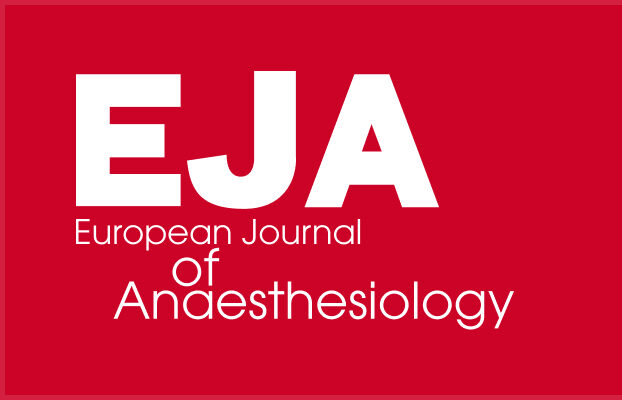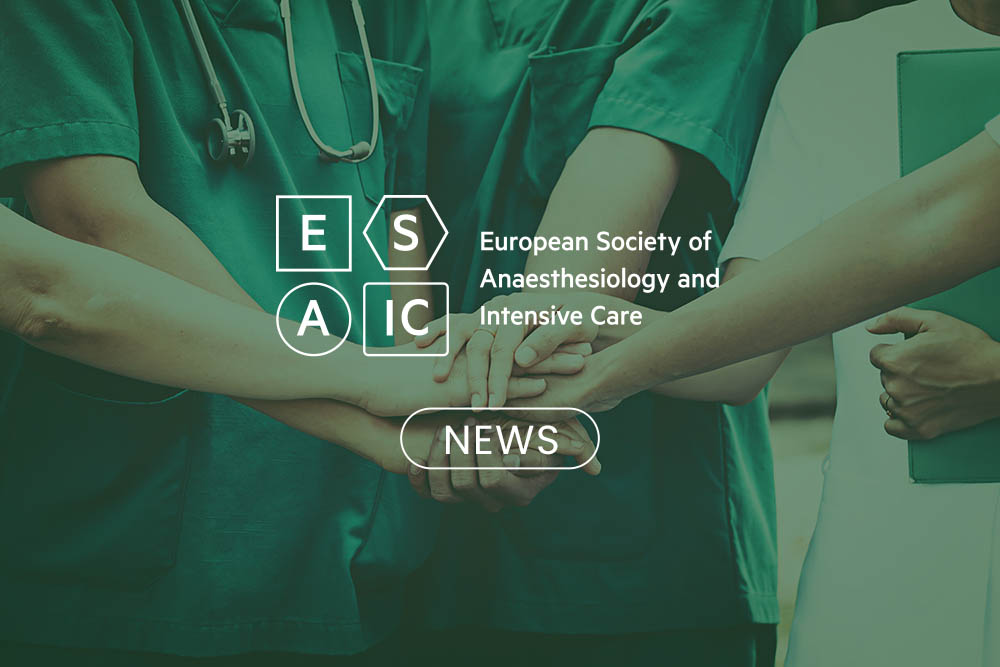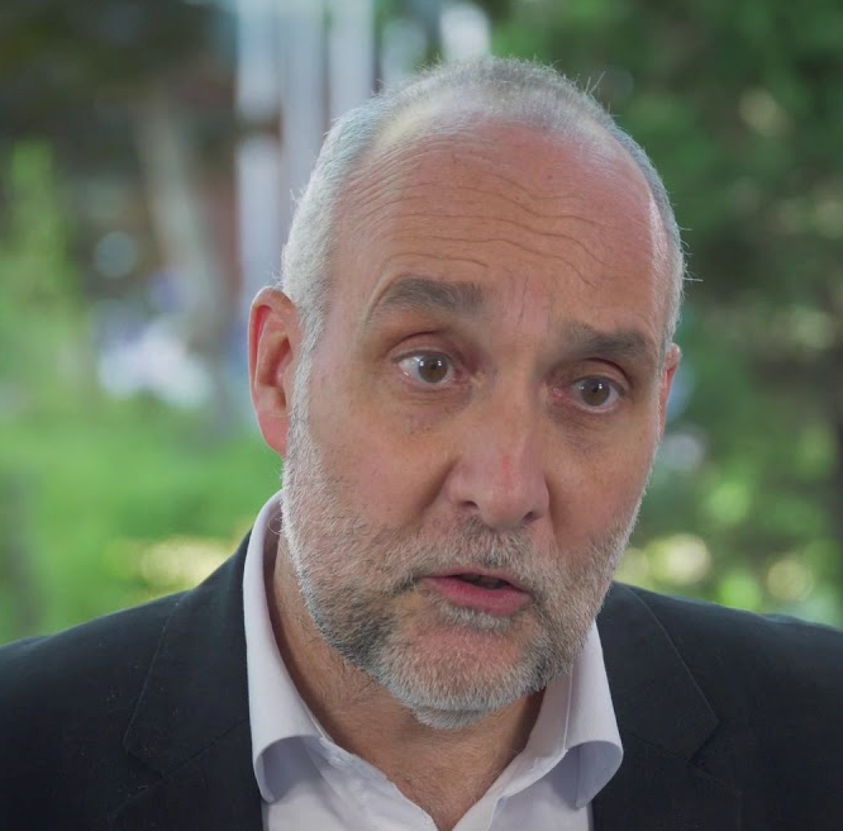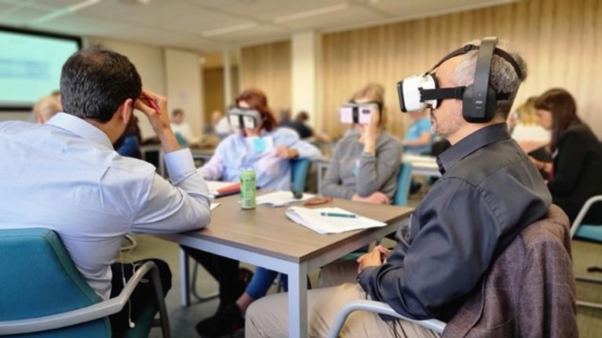Newsletter 2023
Interview with Prof. Fuchs-Buder on the latest guidelines on Neuromuscular blockade management
Taskforce chair: Fuchs-Buder, Thomas
CHRU Nancy
Chef du pôle Bloc Opératoire
Departement d’anesthésie, réanimation & médecine périoperatoire
Summary of recommendations (R)
R1: We recommend using a muscle relaxant to facilitate tracheal intubation (1A: high-quality evidence, strong recommendation).
R2: We recommend using muscle relaxants to reduce pharyngeal and/or laryngeal injury following endotracheal intubation (1C: low quality of evidence, strong recommendation).
R3: We recommend the use of a fast-acting muscle relaxant for RSII, such as succinylcholine 1 mg kg-1 or rocuronium 0.9 to 1.2 mg kg-1 (1B: moderate quality of evidence, strong recommendation).
R4: We recommend deepening neuromuscular blockade if surgical conditions need to be improved (1B: moderate quality evidence, strong recommendation).
R5: There is insufficient evidence to recommend profound neuromuscular blockade, in general, to reduce postoperative pain or decrease the incidence of peri-operative complications. (2C: low-quality evidence, weak recommendation)
R6: We recommend using ulnar nerve stimulation and quantitative NMM at the adductor pollicis muscle to exclude residual paralysis. (1B: moderate-quality evidence, strong recommendation)
R7: We recommend using sugammadex to antagonise deep, moderate and shallow neuromuscular blockade induced by aminosteroidal agents (rocuronium, vecuronium) (deep: post-tetanic count >1 and TOF count 0, moderate: TOF-count 1 to 3, shallow: TOF-count 4 and TOF-ratio < 0.4) (1A: high-quality evidence, strong recommendation)
R8: We recommend advanced spontaneous recovery (i.e. TOF-ratio >0.2) before starting neostigmine-based reversal and to continue quantitative monitoring of neuromuscular blockade until a TOF-ratio of more than 0.9 has been attained. (1C: low-quality evidence, strong recommendation)
– How many task force members were involved in the progress of the development of this guideline?
There were 14 task force members from 9 different Member States of the ESAIC. In addition to these 14 members, the literature search strategy was developed by a trial search and Cochrane information specialists from Copenhagen.
– What were the biggest challenges you faced while developing this guideline?
This is an excellent question. The biggest challenge we were utterly unprepared for in developing our guidelines was the COVID-19 pandemic. This was the biggest challenge because physical meetings were not possible. Many task force members were intensivists and were occupied with challenging work in the intensive care unit, especially in early 2020, when the COVID pandemic became a real problem. So our job was massively impacted by COVID-19 because we needed more time to meet physically. This was a big problem and delayed the development of our guidelines!
– Have the guidelines been in development since even before the pandemic started?
Yes, we started in August 2019.
– How many papers were screened?
This was a nightmare for me. We started initially with more than 24,000 papers. On these 24,000 papers, there were many substances, many neuromuscular blocking (NMB) agents that were no longer commercialised, from the early 1950s to 1960s. And these drugs were no longer used. They had pharmacodynamic and pharmacokinetics behaviour that did not correspond to the current drugs. For example, regarding monitoring the threshold of correct reversal, we are entirely different from the early 1970s. In former times they were happy with a train-of-four (TOF) ratio of 0.7; nowadays, we want to have more than 0.9.
So to make these guidelines in line with the product to use and thresholds nowadays, we limited the second step of our research to 1996 to 2021, and this way, we reduced the initial literature from more than 24,000 to around 13,000 papers. Then from these 13,000 papers, we could identify about 166 articles. From these 166 relevant abstracts, we found 88 appropriate titles that were further analysed.
– What were the main criteria for the selection of the papers?
They must stick to our research criteria: neuromuscular blockade monitoring, NMB agents, and reversal agents.
We only looked at randomised controlled studies and had no language restriction.
We also analysed Cochrane and systematic reviews but did not include study abstracts.
– Could you tell us more about the grading methodology?
Indeed, we used grading methodology as required by ESAIC methodology. We quantified the strength of our recommendations in the strong and weak recommendations and the quality of evidence in high, moderate or low evidence. And this allowed us to quantify the quality of our analysed papers.
– A Two-step Delphi process was used to determine the agreement of the panel members with the recommendations. Could you elaborate on that, please?
Indeed, in the first round, the statements of the task force members were discussed and refined. There was a face-to-face hybrid meeting in 2022 at Milan and a video conference for Task Force members who were not present. A set of eight statements were identified for further development. So that was our first round, and then the 2nd, final Delphi round was a pure virtual meeting, where Task Force members were asked to indicate approval or rejection of each of the eight statements, with the option of suggesting changes. Affirmative and positive ratings were adopted when the approval rate was at least 80%. It is essential to state that all eight recommendations reached a complete agreement. All present task force members voted positively. There was no single negative vote on these eight recommendations, which is relatively exceptional and shows the power and evidence of our recommendations.
– And usually, I suppose, it’s not so common to have everybody unanimously agree.
No, not at all.
– What are the main implementation goals for this guideline?
We identified objective, quantitative neuromuscular monitoring as the critical element for any safe approach to neuromuscular management. Whether you reverse your patient or whether you allow spontaneous recovery. These things needed objective quantitative monitoring, and our guidelines’ most important message is to routinely use this quantitative objective neuromuscular monitoring.
– And what was the goal of using the infographics?
It makes it easier to understand that this was eye-catching. You see the most important message, and it is a little bit more like a game. You do not have to read the entire article. But you get the key messages presented in an easy-to-understand way, and it allows it. It makes it much easier to announce and communicate on social networks with an infographic rather than a 10-page article.
– And are there any future guideline topics to address?
Yes, in this first guideline on neuromuscular management of NMB developed by ESAIC, we focused voluntarily on adult patients. We did not focus on paediatric patients because this is a field on its own, and we feel the need to develop relatively rapid guidelines on the management of the NMB. A subpopulation, and as much as I know, there is already a task force that has been established, or there is a first start, an initial start of this development in, in the guidelines, in the paediatric population. But this is the next step to do definitively.
– Will a survey help assess the implementation of the guidelines?
When thinking about these guidelines, implementation was always present in all discussions. We do not want to develop guidelines to publish them and forget them after that. From the beginning on, we want to have something that can be translated into clinical practice. So, implementation was an important issue from the beginning, and we have a defined strategy developed with Prof. Dan Longrois (EJA Deputy Editor-in-Chief) for this implementation process. Indeed, a survey before and after approach may be an excellent option to see the progress in implementing these guidelines and routine clinical practice.
– How long do you think you need to implement the new practice?
We know from previous studies if you want to change an established practice, it needs years.
It will be a long process, and we know from the « POPULAR” (CTN Study) study that less than 20% of patients across Europe currently are correctly quantitatively monitored. So presently, based on the figures from the famous research, less than 20% of patients are managed as you want to have them managed all. So, it is a significant way to go, and we start for two or three years. With analysis at the end, we will see whether we will update the guidelines or accelerate the implementation process. So, this is a long-term strategy and not a short-term strategy. It will be massive work, but currently, we are terrible across Europe, and not only across Europe. Last week ASA (American Society of Anaesthesiology) published its guidelines on the management of NMB, analysed the same literature with the same method, and came to the same conclusions. They also identified the switch to routine quantitative neuromuscular monitoring as the most crucial step to improve patient outcomes.
The most important anaesthesia societies in the world ASA and ESAIC, both developed their guidelines on neuromuscular management approach that postcard thanks came to a shared joint statement on this need to monitor objectively, quantitatively NMB. It would be great, and it seems the logical next step because both societies identified the need to develop these guidelines independently. They choose the same method, analyse the same literature, come to the same conclusions, and they should now make the last step and come up with a joint statement on the need to routinely and quantitatively monitor every time you use an NMB agent. and that would help to accelerate this implementation process.
– And this is maybe more of my interest, but do you have any contacts with universities to implement this?
Not yet with the university. What has been done: Prof. Dan Longrois informed the different National Societies to change the rule. First important step; is current information from the other national societies about our wish to change the practices and to go for routine quantitative neuromuscular management. That is the first vital step to do along with the national societies. It is nice to choose some universities or hospitals that follow the guideline because they are convinced that it would be much more efficient. If the national guidelines supported this way, and if what we developed as ESAIC guidelines would be transformed into national recommendations by every society adhering inside, that’s what we are currently doing. But the booster would be the joint statement of ASA and ESAIC. Indeed, it would be great to have such a joint statement published in the anesthesiology and European Journal concomitantly; that would boost our guidelines and help implement them.
Thank you for your time and support.










